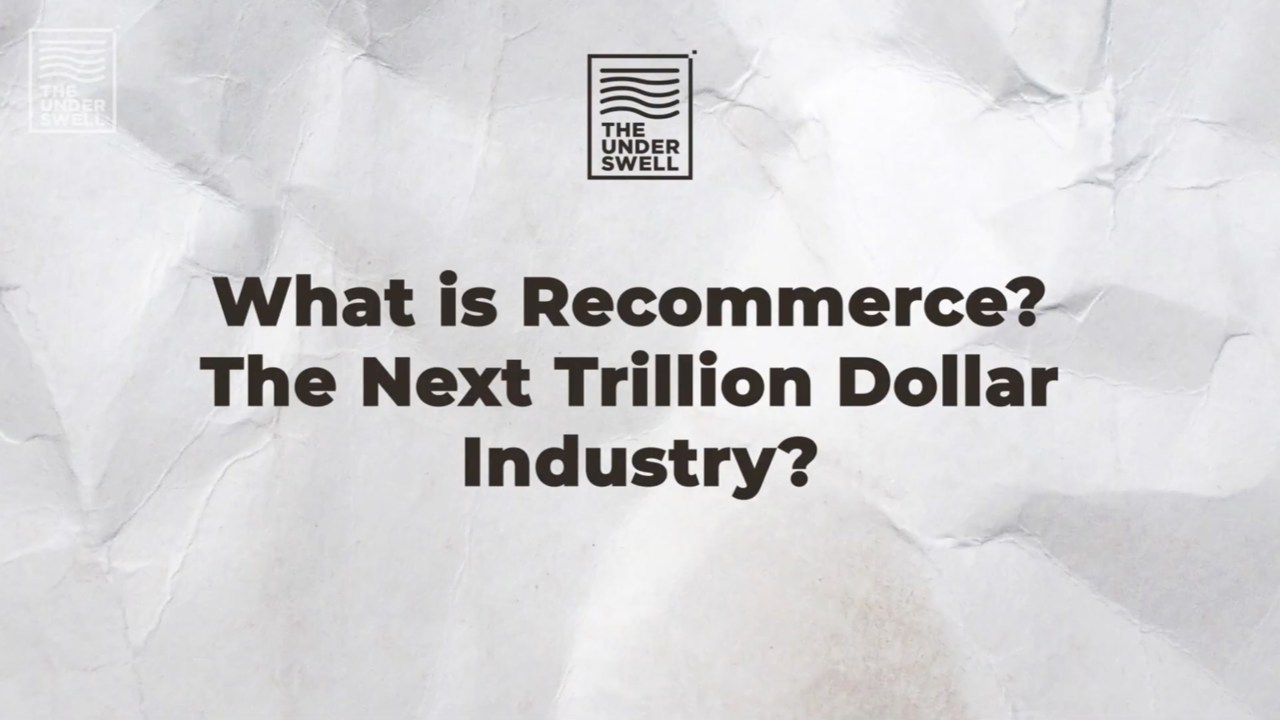What is Recommerce?
Feb 10, 2023
Recommerce is one of the largest up-and-coming industries in the fashion industry with brands of all sizes signing on to create more sustainable business structures. With all this potential, recommerce must be the way of the future, but what does it really mean?
Today, we’re going to look at recommerce 101 and how your business (or closet!) could benefit from incorporating it. If you prefer to watch, check out our YouTube channel on this same topic and leave us your thoughts in the comments.
Thrift stores used to be the go-to for consumers who wanted to find sustainable options at an affordable price, but thrift stores are typically inconsistent in the types of products they sell. You may be on the hunt for those perfect Levi’s 501 jeans, but you just can’t seem to find them at your local thrift stores (or in your size!). This is where recommerce shines.
Brands started to see the potential their vintage or pre-worn clothes have in the market. Logically, why would a brand that spends all that money on materials, labor, transportation, plus more want to see another store making a profit off of their product? Recommerce allows that brand to potentially capture that product at the end of its life and continue to have it generate revenue for them in the resale market.
Patagonia was one of the first brands to do this (part of the reason we call them sustainable fashion’s North Star) with their Worn Wear program and repair program. Customers who no longer need a Patagonia product can trade it in for store credit to get something new or if their product has a rip in it, the repair team can easily fix it, keeping it in use longer.
It may sound a little daunting to open your brand’s doors to consumers and tell them to send in their used products, but thankfully, there are organizations out there that can help you handle the workload and get products into tip-top condition.
Renewal Workshop is one of the original organizations helping brands manage their recommerce inventory. With a number of services available, they can help your brand get organized, launch a recommerce website, manage your inventory, and get you one step closer to a circular business model.
Even with the capabilities we have available today, recommerce will only reach its full potential when we adopt a system-wide approach. That means brands and consumers have to do their part - consumers should vote with their dollar and support brands who are engaging in recommerce or buy items secondhand and brands need to re-invest in their own products. Not only is it a great way to grow profits, it’s just the responsible thing to do.
This may sound like one big sales pitch for recommerce, but there are actually two big reasons why the fashion industry should be leaning more into this unique system.
The first is that we’re using too many resources. Making a brand-new piece of clothing has a huge footprint across a number of impact areas, but let’s look at some of the impacts associated with a pair of jeans. Think of all the cotton that needs to be harvested, the water that’s needed to wash and dye the jeans, and all the people that work hard at each step to put those jeans together. Now, this is a very simplified version of what actually happens across the production of a pair of jeans, but you get the point. If we can collect those jeans when one customer is done with them, we can clean them up and send them to a new customer - maximizing those s embedded resources and reducing the number of additional resources necessary.
The second reason we should be investing in recommerce is that it’s a big step towards circularity. Almost every brand is pushing hard for circularity and is using the language in some way in their marketing, but imagine making a huge step for your brand in the right direction. No buzzwords, no greenwashing, just action.
Now that we have all this information, how can we support recommerce and the movement towards a circular economy? Here are a few suggestions:
- Buy products that will last or buy from brands that support durability - some of our favorites are Patagonia, Levi’s, and Blundstone
- Take care of your products - wash your items on less intense settings and, if you can, don’t wash products like jeans and jackets as often
- Resell your products - before you throw out that top from last season, think about selling it on a resale platform like Depop or ThredUp
- Buy secondhand - similarly to the previous suggestion, consider buying your next piece of clothing from a resale marketplace
Have a recommerce story you want to share? Email us at [email protected]! You can learn more and stay connected with us on Instagram and send us a DM for all your sustainability questions.
If you’d like to access even more sustainability content, join our member network and get the inside scoop on all the latest happenings in the world of sustainable fashion. We cover everything from innovations and lifestyle tips to reports and the fundamentals - plus, we have a great circle of peers to connect with. See you there!
Thanks!
McKenzie
